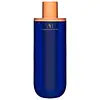What's inside
What's inside
 Key Ingredients
Key Ingredients

 Benefits
Benefits

 Concerns
Concerns

 Ingredients Side-by-side
Ingredients Side-by-side

Water
Skin ConditioningGlycerin
Humectant1,2-Hexanediol
Skin ConditioningCellulose
AbsorbentEthylhexyl Polyhydroxystearate
EmollientResveratrol
AntioxidantSqualane
EmollientSodium Acrylates Copolymer
Ascorbyl Tetraisopalmitate
AntioxidantOryza Sativa Bran Oil
EmollientMaltitol
HumectantLeontopodium Alpinum Callus Culture Extract
AntioxidantXylitylglucoside
HumectantLecithin
EmollientAnhydroxylitol
HumectantCitric Acid
BufferingXylitol
HumectantHydrolyzed Rice Protein
Skin ConditioningMaltodextrin
AbsorbentSodium Hyaluronate
HumectantSodium Hydroxide
BufferingO-Cymen-5-Ol
AntimicrobialPunica Granatum Extract
AstringentSodium Phytate
Glucose
HumectantXanthan Gum
EmulsifyingCamellia Sinensis Leaf Extract
AntimicrobialHydrogenated Lecithin
EmulsifyingTocopheryl Acetate
AntioxidantAlanyl Glutamine
HumectantArginine
MaskingOligopeptide-177
Potassium Sorbate
PreservativeSodium Chloride
MaskingPhenylalanine
MaskingSisymbrium Irio Seed Oil
MaskingWater, Glycerin, 1,2-Hexanediol, Cellulose, Ethylhexyl Polyhydroxystearate, Resveratrol, Squalane, Sodium Acrylates Copolymer, Ascorbyl Tetraisopalmitate, Oryza Sativa Bran Oil, Maltitol, Leontopodium Alpinum Callus Culture Extract, Xylitylglucoside, Lecithin, Anhydroxylitol, Citric Acid, Xylitol, Hydrolyzed Rice Protein, Maltodextrin, Sodium Hyaluronate, Sodium Hydroxide, O-Cymen-5-Ol, Punica Granatum Extract, Sodium Phytate, Glucose, Xanthan Gum, Camellia Sinensis Leaf Extract, Hydrogenated Lecithin, Tocopheryl Acetate, Alanyl Glutamine, Arginine, Oligopeptide-177, Potassium Sorbate, Sodium Chloride, Phenylalanine, Sisymbrium Irio Seed Oil
Water
Skin ConditioningButylene Glycol
HumectantCaprylyl Methicone
Skin ConditioningGlycerin
HumectantPEG-7 Glyceryl Cocoate
EmulsifyingPanthenol
Skin ConditioningSalicylic Acid
MaskingBoswellia Carterii Resin Extract
MaskingStyrax Benzoin Resin Extract
MaskingSpiraea Ulmaria Extract
AstringentArctium Majus Root Extract
Skin ConditioningCommiphora Abyssinica Resin Extract
Skin ConditioningOrthosiphon Stamineus Extract
Skin ConditioningPEG-40 Hydrogenated Castor Oil
EmulsifyingCarbomer
Emulsion StabilisingAcrylates/C10-30 Alkyl Acrylate Crosspolymer
Emulsion StabilisingDisodium EDTA
Ethylhexylglycerin
Skin ConditioningSodium Hydroxide
BufferingXanthan Gum
EmulsifyingMaltodextrin
AbsorbentCitric Acid
BufferingParfum
MaskingPhenoxyethanol
PreservativeGeraniol
PerfumingAmyl Cinnamal
PerfumingAlpha-Isomethyl Ionone
PerfumingLinalool
PerfumingBenzyl Benzoate
AntimicrobialLimonene
PerfumingCitral
PerfumingEugenol
PerfumingBenzyl Alcohol
PerfumingWater, Butylene Glycol, Caprylyl Methicone, Glycerin, PEG-7 Glyceryl Cocoate, Panthenol, Salicylic Acid, Boswellia Carterii Resin Extract, Styrax Benzoin Resin Extract, Spiraea Ulmaria Extract, Arctium Majus Root Extract, Commiphora Abyssinica Resin Extract, Orthosiphon Stamineus Extract, PEG-40 Hydrogenated Castor Oil, Carbomer, Acrylates/C10-30 Alkyl Acrylate Crosspolymer, Disodium EDTA, Ethylhexylglycerin, Sodium Hydroxide, Xanthan Gum, Maltodextrin, Citric Acid, Parfum, Phenoxyethanol, Geraniol, Amyl Cinnamal, Alpha-Isomethyl Ionone, Linalool, Benzyl Benzoate, Limonene, Citral, Eugenol, Benzyl Alcohol
 Reviews
Reviews

Ingredients Explained
These ingredients are found in both products.
Ingredients higher up in an ingredient list are typically present in a larger amount.
Citric Acid is an alpha hydroxy acid (AHA) naturally found in citrus fruits like oranges, lemons, and limes.
Like other AHAs, citric acid can exfoliate skin by breaking down the bonds that hold dead skin cells together. This helps reveal smoother and brighter skin underneath.
However, this exfoliating effect only happens at high concentrations (20%) which can be hard to find in cosmetic products.
Due to this, citric acid is usually included in small amounts as a pH adjuster. This helps keep products slightly more acidic and compatible with skin's natural pH.
In skincare formulas, citric acid can:
While it can provide some skin benefits, research shows lactic acid and glycolic acid are generally more effective and less irritating exfoliants.
Most citric acid used in skincare today is made by fermenting sugars (usually from molasses). This synthetic version is identical to the natural citrus form but easier to stabilize and use in formulations.
Read more about some other popular AHA's here:
Learn more about Citric AcidGlycerin is already naturally found in your skin. It helps moisturize and protect your skin.
A study from 2016 found glycerin to be more effective as a humectant than AHAs and hyaluronic acid.
As a humectant, it helps the skin stay hydrated by pulling moisture to your skin. The low molecular weight of glycerin allows it to pull moisture into the deeper layers of your skin.
Hydrated skin improves your skin barrier; Your skin barrier helps protect against irritants and bacteria.
Glycerin has also been found to have antimicrobial and antiviral properties. Due to these properties, glycerin is often used in wound and burn treatments.
In cosmetics, glycerin is usually derived from plants such as soybean or palm. However, it can also be sourced from animals, such as tallow or animal fat.
This ingredient is organic, colorless, odorless, and non-toxic.
Glycerin is the name for this ingredient in American English. British English uses Glycerol/Glycerine.
Learn more about GlycerinMaltodextrin is a polysaccharide. It is derived from starch such as rice, corn, wheat, or potato starch.
In food, Maltodextrin is used to improve the texture and thicken a product. Due to its structure, it can help create a gel texture. As an emulsion stabilizer, it helps keep the ingredients in a product together.
As a polysaccharide, Maltodextrin has moisturizing properties. Polysaccharides are a type of carbohydrate. The top layer of skin uses polysaccharides to retain water, keeping the skin hydrated.
Maltodextrin is water soluble and has a sweet taste.
Learn more about MaltodextrinSodium Hydroxide is also known as lye or caustic soda. It is used to adjust the pH of products; many ingredients require a specific pH to be effective.
In small amounts, sodium hydroxide is considered safe to use. However, large amounts may cause chemical burns due to its high alkaline.
Your skin has a natural pH and acid mantle. This acid mantle helps prevent harmful bacteria from breaking through. The acid mantle also helps keep your skin hydrated.
"Alkaline" refers to a high pH level. A low pH level would be considered acidic.
Learn more about Sodium HydroxideWater. It's the most common cosmetic ingredient of all. You'll usually see it at the top of ingredient lists, meaning that it makes up the largest part of the product.
So why is it so popular? Water most often acts as a solvent - this means that it helps dissolve other ingredients into the formulation.
You'll also recognize water as that liquid we all need to stay alive. If you see this, drink a glass of water. Stay hydrated!
Learn more about WaterXanthan gum is used as a stabilizer and thickener within cosmetic products. It helps give products a sticky, thick feeling - preventing them from being too runny.
On the technical side of things, xanthan gum is a polysaccharide - a combination consisting of multiple sugar molecules bonded together.
Xanthan gum is a pretty common and great ingredient. It is a natural, non-toxic, non-irritating ingredient that is also commonly used in food products.
Learn more about Xanthan Gum